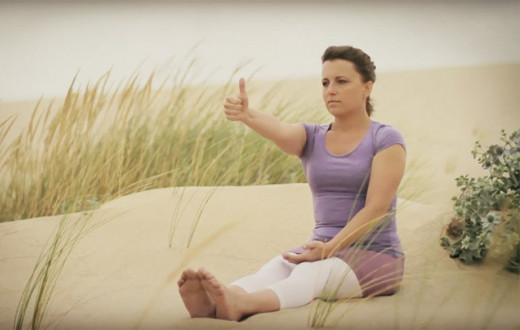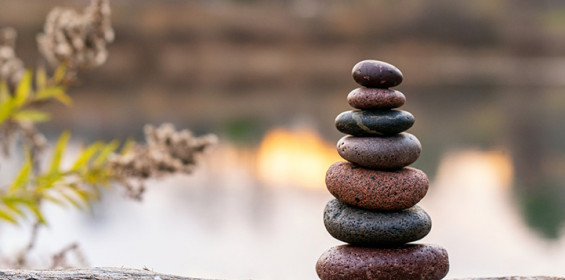By Elizabeth Herman
Just getting started on your yoga journey and need some guidance? Check out Sri Sri Yoga or Art of Living yoga for beginner tips to help you on your way.
Since its origin, yoga has been a refuge to many across the world. The benefits of yoga poses are for everyone. Fitness freaks and seekers of calmer minds alike can enjoy yogic bliss. They may or may not seek a higher state of consciousness.
We all have done yoga poses as babies. Since birth, babies tend to get into different positions while lying down. They also do when learning to stand or walk. In fact, babies even breathe as yogis and their mind is also like yogis - always in the present moment. So, this list of 10 easy yoga poses for beginners is reminding us of the wonder poses that we did in our childhood.
Returning to the yogic knowledge inherited as babies has a multifold effect on us. It helps us to achieve a childlike state in which the mind is aware and in the present. The mind is in a calm and relaxed state. With the physical postures in Hatha Yoga, the body becomes more flexible and healthier.
So, pull out that yoga mat. Wear comfortable clothes and begin with this wonderful yoga sequence for beginners.
Easy yoga poses for beginners
Whether you’re a beginner, intermediate, or expert, it’s advisable to begin with a warm-up. You can also use Sukshma Vyayama (gentle exercises). A few minutes of warm-up makes the tendons more flexible. Sukshma Vyayama relaxes the body. Once done, you can perform the following sequence of easy yoga poses for beginners:
1. Butterfly pose (Baddhakonasana)
This seated pose improves bowel movements and flexibility in the groin and hip region. Relieves menstrual discomfort.
2. Cat pose and cow pose (Marjariasana)
This beginner yoga pose improves digestion. It relaxes the mind. It makes the spine flexible and strengthens knee, wrist, and shoulder joints.
3. Child’s pose (Shishuasana)
This easy yoga pose allays constipation and soothes the nervous system. It stretches each hip, thigh, and leg muscle.
4. One-legged forward bend (Janu Shirasana)
This foundational yoga pose stretches the lower back. It massages the abdominal and pelvic organs and tones the shoulders, stretching the shoulder blades.
5. Mountain pose (Tadasana)
This standing pose improves posture and concentration. It strengthens the leg muscles, lengthens the spine, and releases tension from the face.
6. Warrior pose (Veerbhadrasana)
This easy pose improves balance in the body, augments stamina, and releases stress in the shoulders. Also, strengthens the legs, arms, lower back. Helpful for those leading a sedentary lifestyle.
7. Bending backward (Ardha chakrasana)
A balancing pose that tones the arms and shoulder muscles and stretches the upper front torso.
8. Angle pose (Konasana)
This standing pose helps those suffering from constipation and sciatica. Augments flexibility of spine and tones the upper body, including arms, legs, and abdominal organs.
9. Chair pose (Utkatasana)
This yoga asana strengthens the lower back, balances the upper body, and boosts determination. Energizes each thigh.
10. Yogic sleep (Yoga Nidra)
Always end the routine with a resting pose or Yoga Nidra. It prepares the nervous system to absorb the effects of all yoga postures performed.
For beginners, it’s important to review some of the guidelines listed below.
I. Who can do these postures?
Everybody can do this yoga practice. It’s advisable to consult your physician if you have any specific health issues. It’s recommended to learn these asanas (another word for yoga pose is asana) in a yoga class with trained teachers.
II. Where can we do them?
Beginners or experts can do any yoga position indoors or outdoors on a yoga mat. However, it’s advisable to do them in a clean, well-ventilated, and quiet place.
III. When can we do them?
We may practice these at any time of the day, but there has to be a gap of 2-3 hours after a meal. The best time to do these yoga poses is early morning on an empty stomach. You can also perform them in the evening, before dinner.
IV. Any important precaution to keep in mind?
Remember, it isn’t important to get into a yoga posture with perfection the first time. Stretch only as much as you can. If any stretch causes pain, then stop. With patience at a slow rate, extend your comfort zone day by day with every yoga session.
For a more enhanced and safer yoga experience, it is advisable to learn yoga poses from a trained teacher. A Sri Sri Yoga program or Art of Living Yoga can provide the perfect experience for beginners.
Browse our entire yoga poses library, or attend our yoga course and learn more about each yoga pose in detail. If you are interested in becoming a yoga teacher, click here for more information.
While a regular yoga practice can result in improved health, know that it is not a substitute for medical treatment. It is important to learn and practice yoga under the supervision of a trained teacher. In the case of a medical condition, practice yoga after consulting a doctor.
To learn more about yoga, tune in to Beyond Breath - A FREE Breath & Meditation Online Session With a Live Instructor. You’ll learn about SKY Breath Meditation. It has helped millions of people around the world to live healthier, happier lives.
Elizabeth Herman is a long time meditator, a trained yoga teacher, and a PhD in English, with concentrations in Rhetoric and Composition, and Literature. She offers writing support to clients, teaches locally, and volunteers for a better world.
(With inputs from Sejal Shah and Meena Waghray, Yoga Faculty at The Art of Living)





























